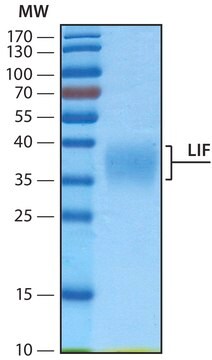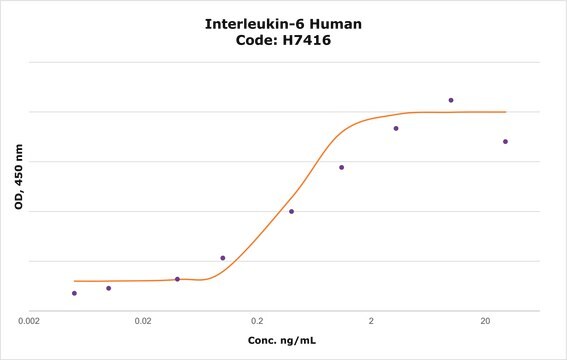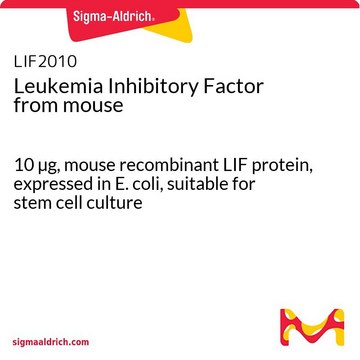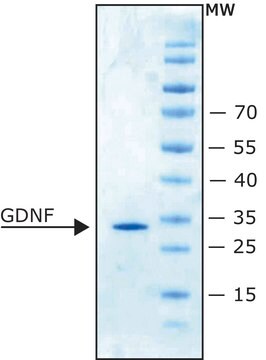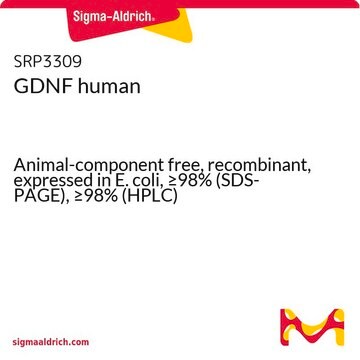L5283
Leukämiehemmender Faktor human
≥95% (SDS-PAGE), recombinant, expressed in E. coli, buffered aqueous solution, suitable for cell culture
Synonym(e):
LIF, rLIF
About This Item
Empfohlene Produkte
product name
Leukämiehemmender Faktor human, LIF, recombinant, expressed in E. coli, 10 μg/ml, buffered aqueous solution (pH 7.4), suitable for cell culture
Rekombinant
expressed in E. coli
Qualitätsniveau
Assay
≥95% (SDS-PAGE)
Form
buffered aqueous solution (pH 7.4)
Wirksamkeit
0.1-1.5 ng/mL ED50/EC50
Qualität
endotoxin tested
Methode(n)
cell culture | mammalian: suitable
Lagertemp.
2-8°C
Suchen Sie nach ähnlichen Produkten? Aufrufen Leitfaden zum Produktvergleich
Biochem./physiol. Wirkung
Physikalische Form
Hinweis zur Analyse
Rechtliche Hinweise
Lagerklassenschlüssel
11 - Combustible Solids
WGK
WGK 3
Flammpunkt (°F)
Not applicable
Flammpunkt (°C)
Not applicable
Persönliche Schutzausrüstung
Eyeshields, Gloves, type N95 (US)
Analysenzertifikate (COA)
Suchen Sie nach Analysenzertifikate (COA), indem Sie die Lot-/Chargennummer des Produkts eingeben. Lot- und Chargennummern sind auf dem Produktetikett hinter den Wörtern ‘Lot’ oder ‘Batch’ (Lot oder Charge) zu finden.
Besitzen Sie dieses Produkt bereits?
In der Dokumentenbibliothek finden Sie die Dokumentation zu den Produkten, die Sie kürzlich erworben haben.
Kunden haben sich ebenfalls angesehen
Artikel
Leukemia Inhibitory Factor (LIF) is a stem cell growth factor used for the in vitro culture of pluripotent mouse embryonic stem cells (ES cells).
Naive pluripotent stem cells are located within the epiblast of mature blastocysts. These primitive “ground-state” cells may be cultured in vitro using specialized media and small molecule inhibitors.
Unser Team von Wissenschaftlern verfügt über Erfahrung in allen Forschungsbereichen einschließlich Life Science, Materialwissenschaften, chemischer Synthese, Chromatographie, Analytik und vielen mehr..
Setzen Sie sich mit dem technischen Dienst in Verbindung.



